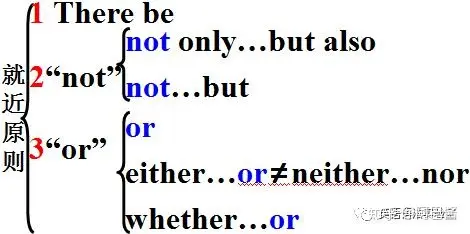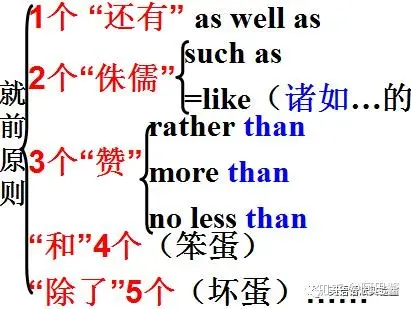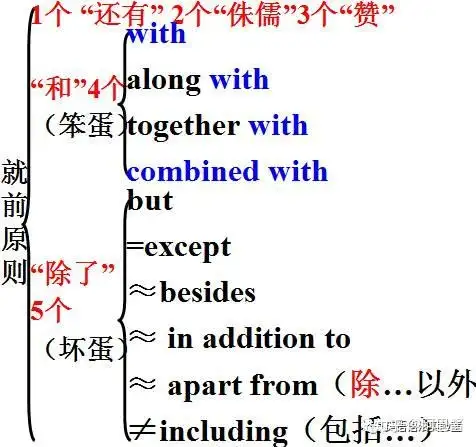主谓一致,顾名思义,指一个句子的主语和谓语在人称和数上保持一致。人称上的一致很简单,我是用I am,你是用You are, 他是用He is.
数上的一致,一般规则为主语是单数,谓语也用单数。主语是复数,谓语也用复数。比如他是用He is, 他们是用They are.但用连词连接并列的两个主语时,用法纷繁复杂,用两张思维导图列举如下,自己结合例句理解。
就近原则:

就近原则例句:
1. There is a pen and two books on the desk.
桌上有一支笔和两本书。
2.Not you but I am to blame.
不该怪你而该怪我。
3.He or I am wrong.
他或是我错了。
4.Neithe ryou nor he is tired.
你和他都没累。
就前原则: 一个小故事:还有2个侏儒,要为他们点3个赞,因为他们和4个笨蛋一起除掉了5个大坏蛋。


就前原则例句:
1.The son,as well ashis parents, wants to go there.
不但儿子想去那儿,而且他的父母也想去。
2.The teacher,as well asthe students, is interested in the activity.
老师也和同学们一样对这项活动有兴趣。
3.Dessert fruit,likestrawberries and pears is very popular.
像草莓和梨这样的餐后水果是很受欢迎的。
4.John,ratherthanhisroommates,istoblame.
约翰,而不是他的室友,应该受到责备。
5.Myfather,nolessthanI,isabase-ballfan.
我的父亲不亚于我也是个棒球迷.
6.Jim,togetherwithhisclassmates,hasseenthefilm.
吉姆和他的同学都看过这部电影。
7.Allthestudents,includingTom,areleaving.
所有的学生,包括汤姆都走了。
8.Nooneexcept(but)meknowsaboutthisnews.
除了我没有人知道这个消息。
